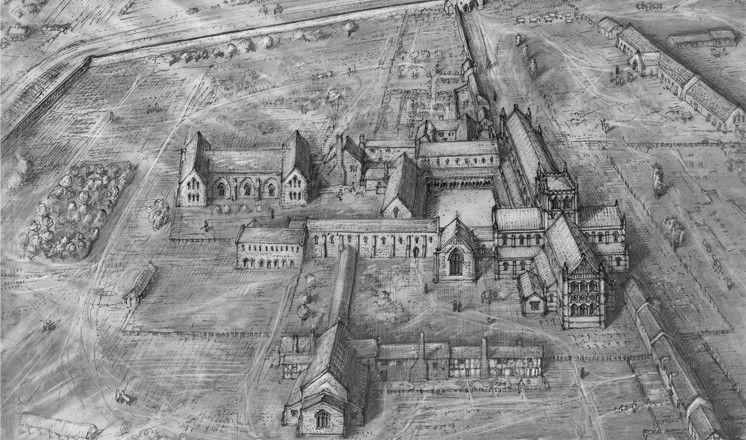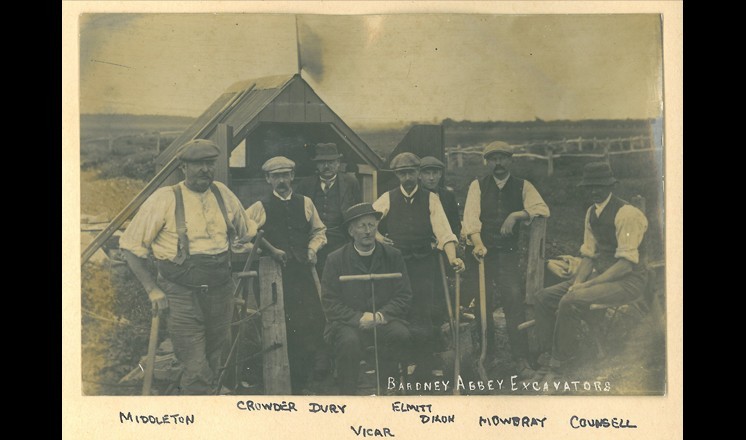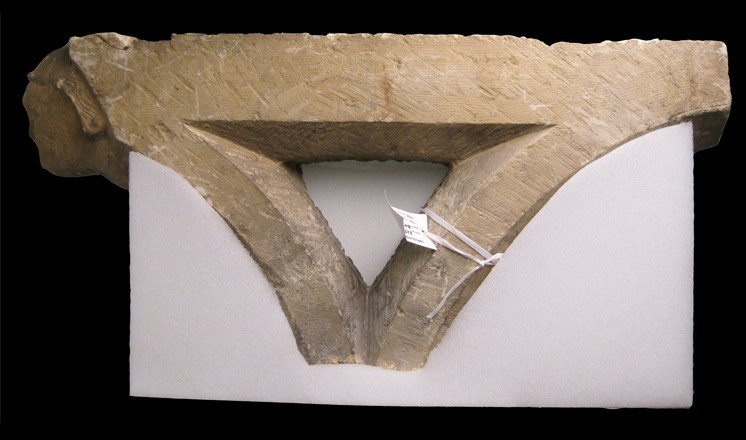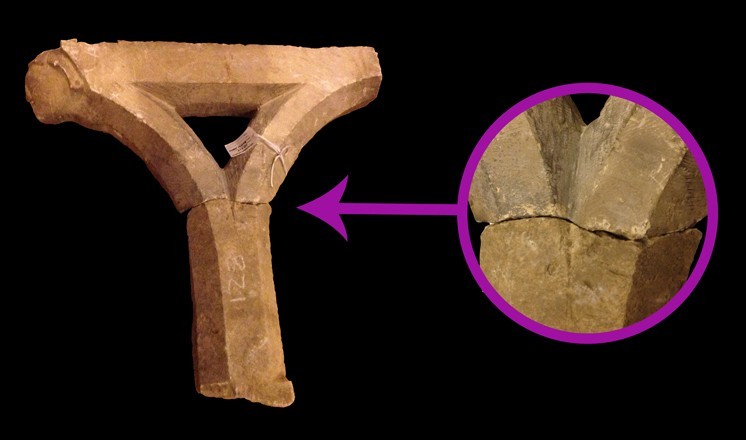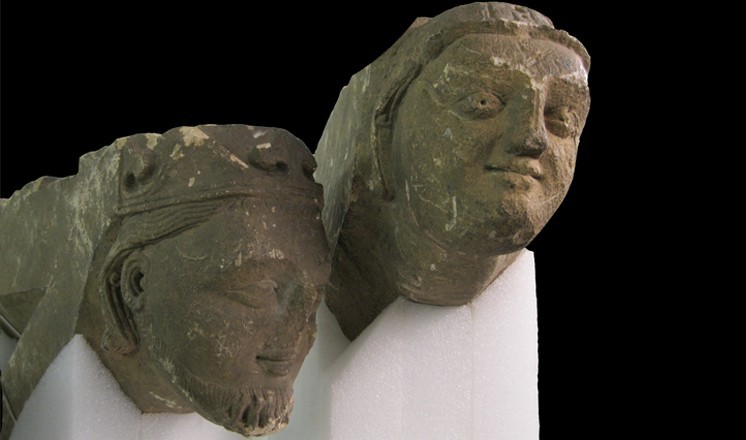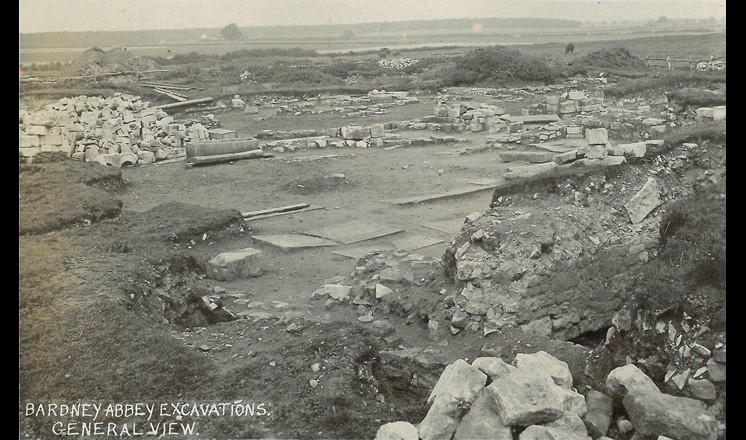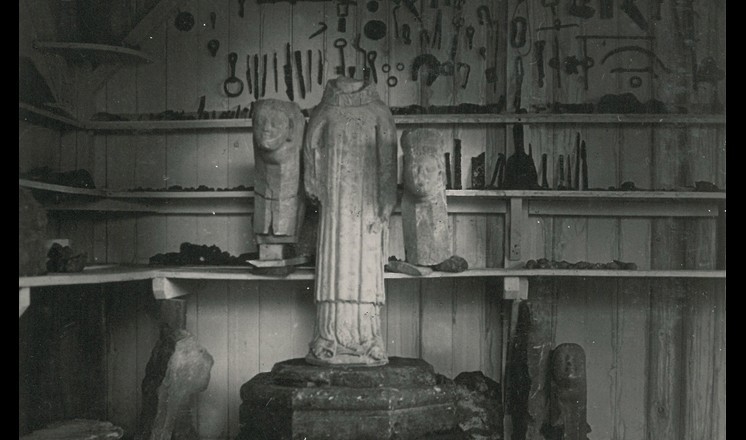Bardney Abbey stonework reunited after a century
RSS FeedBardney Abbey is one of the most fascinating of Lincolnshire's many Medieval monasteries, not least because of its location in the archaeologically rich Witham Valley. It was founded in the 7th Century and housed a shrine to St Oswald, making it an important place of pilgrimage. It was destroyed in a Viking raid in 870 and re-founded in 1087 as a Benedictine house. The Abbey was dissolved in 1538, after 6 of the monks had been executed for their part in the infamous Lincolnshire Rising of 1536. You can read more about the Abbey’s fascinating history from Heritage Lincolnshire, here.
The Abbey was excavated by Rev. C E Laing, the local vicar, between 1909 and 1914. The Collection is fortunate to have the finds and records from his excavations, and even his hand written record of the dig which includes a fascinating archive of original photographs and newspaper clippings.
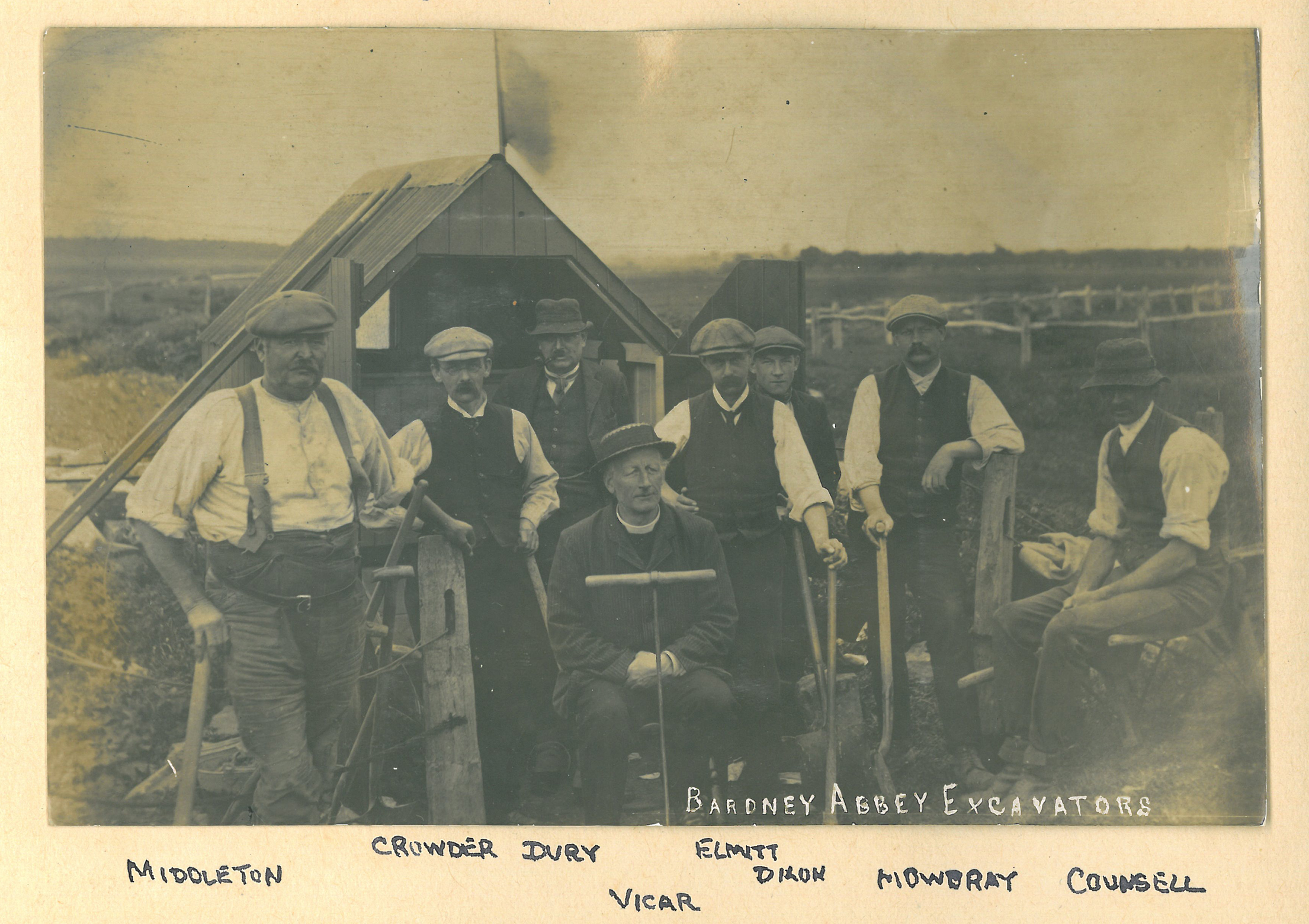
In 2011 the Abbey site was re-excavated by the Bardney Heritage Group and Archaeological Project Services in a Heritage Lottery funded project to investigate the surviving condition of the Abbey’s refectory (the monks’ dining room). You can find out more about the Bardney Heritage Group and the history of the village here and you can see more of the finds from the excavations at the Bardney Heritage Centre.
The excavations revealed the masonry previously uncovered by Rev. Laing as well as a number of finds missed or reburied by the original excavators. Among the most interesting of the pieces of stonework recovered were fragments of refectory table legs - other fragments of which from Rev. Laing’s excavations are already in The Collection. These stone table legs, featuring attractive and high quality carvings of human faces, held the wooden table tops that the monks would have eaten from.
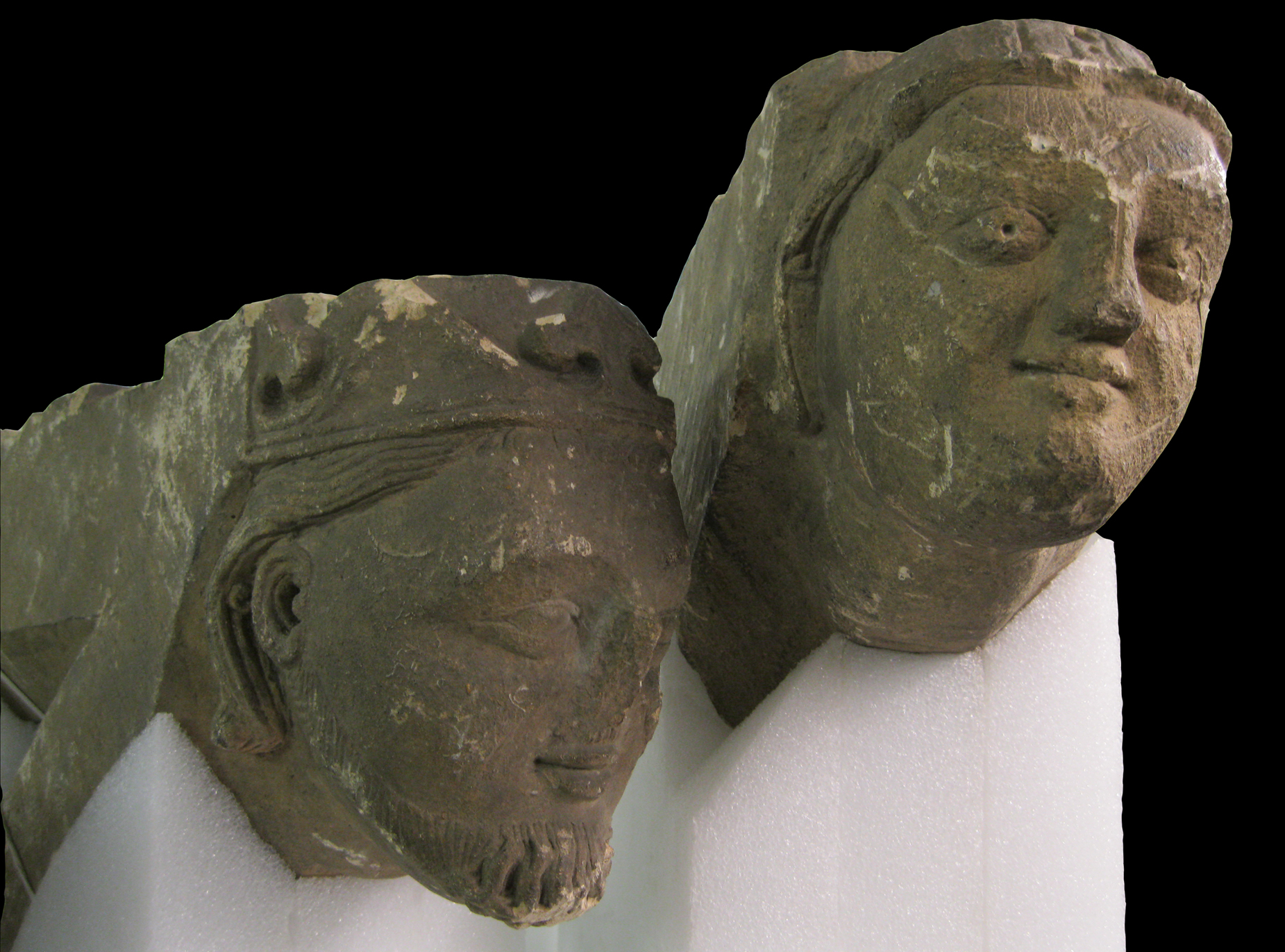
These stone table legs are rarely found intact, and the chance to see if any of the newly excavated fragments matched the old ones was too good to miss. The museum’s pieces were therefore taken out to Bardney one evening in an attempt to complete a rather difficult jigsaw puzzle.
Amazingly, two of the pieces fitted perfectly together, and the top of a table leg excavated by Rev. Laing was matched to its bottom half almost exactly a century later to complete a table leg most likely broken and abandoned at the dissolution in 1538. The first image below shows the museum's piece (in its custom-made foam support), the other image the perfect fit with the newly excavated piece.
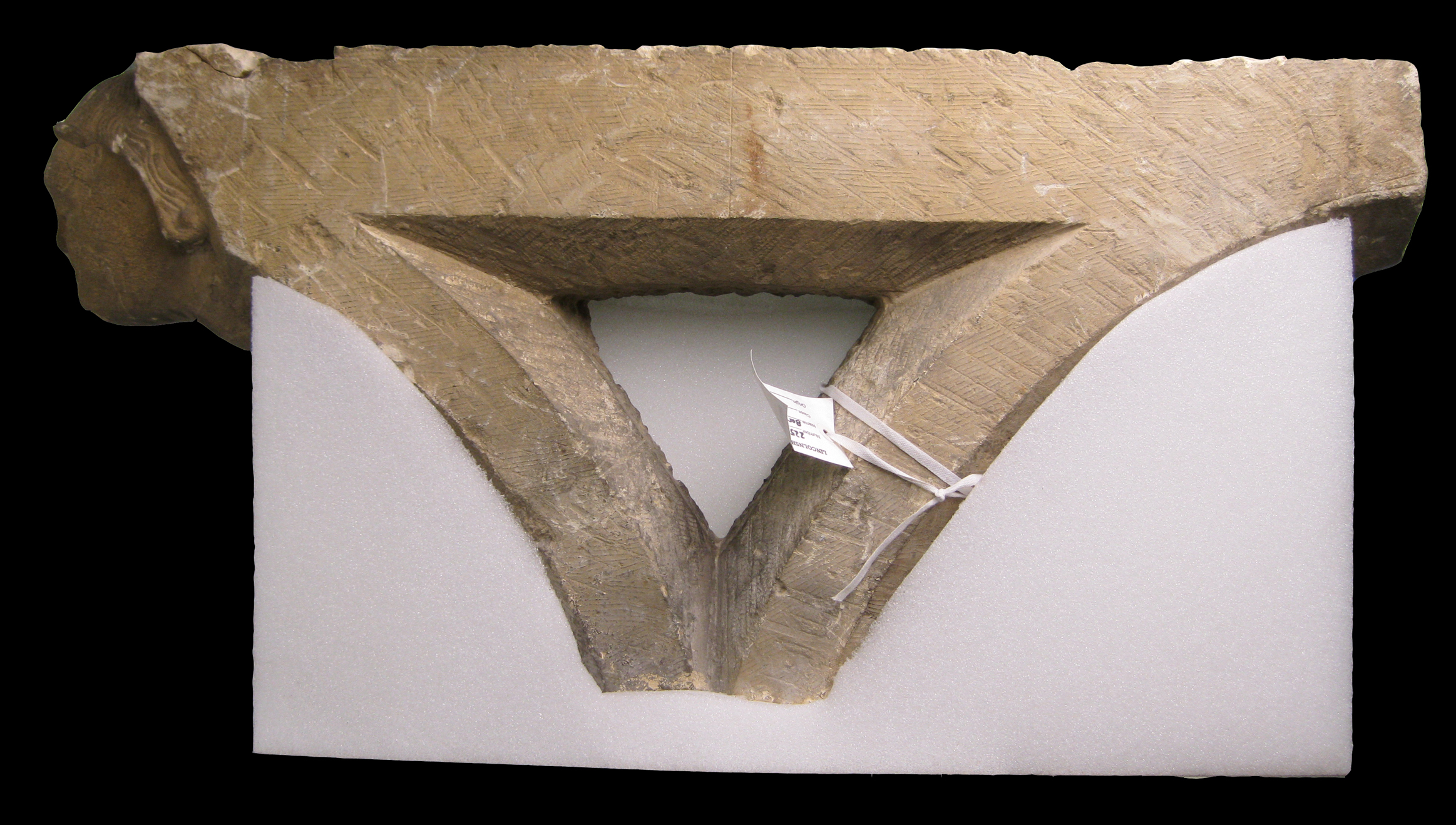
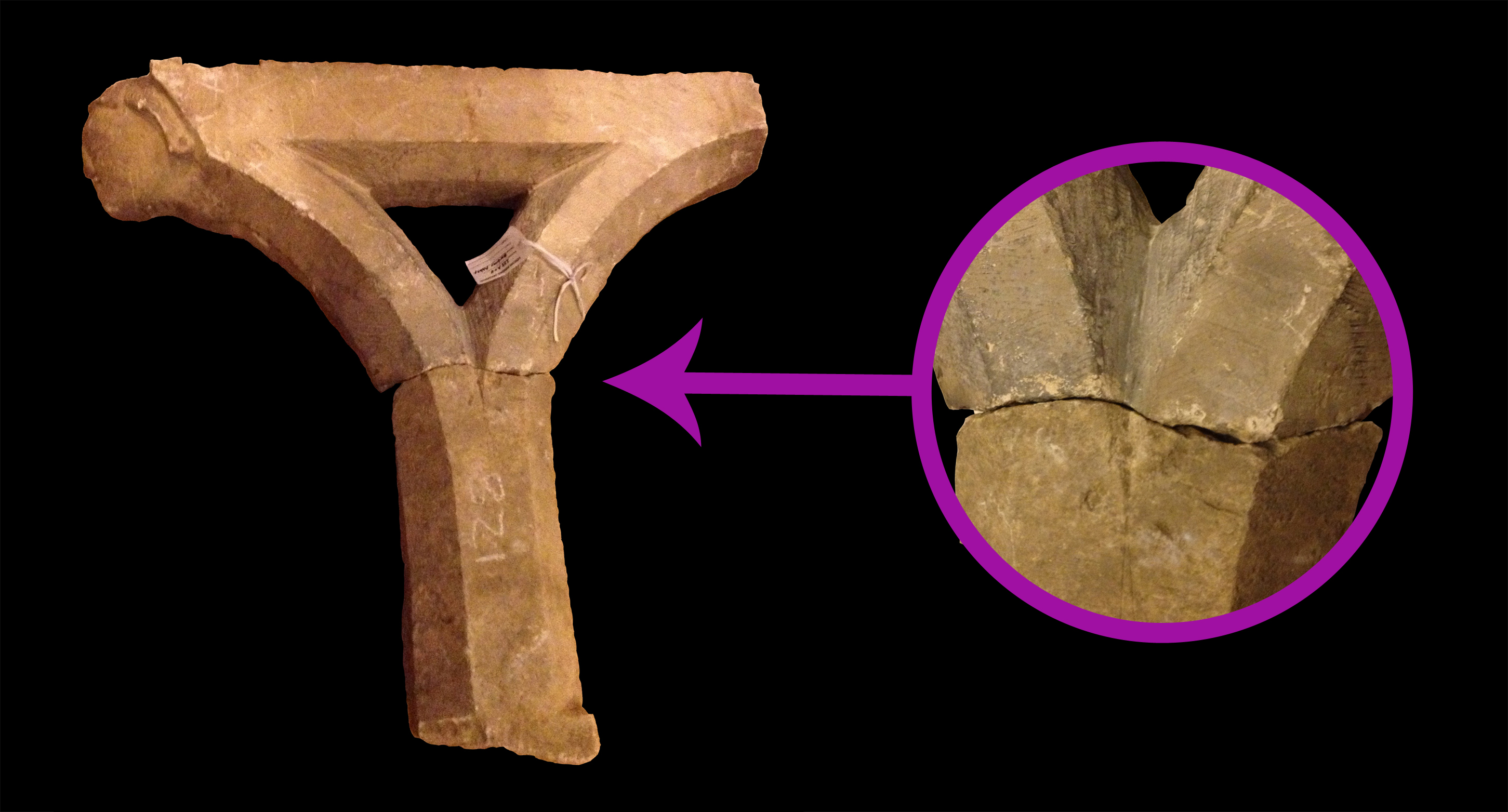
It just goes to show that however much time passes, even well known archaeological sites can still produce new surprises.
Comments
How interesting!
Yaoqiantree
